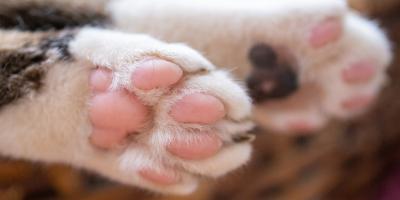Symptoms & Treatment for Bladder Stones in Cats


Bladder stones in cats can be a frustrating condition for both pets and their owners.
If your feline companion has symptoms, they may be unable to urinate. Plus, while researchers have identified some risk factors, and preventative care can help, the exact cause of certain bladder stones is unknown, which means they’re not completely avoidable.
The good news is, because they’re fairly common, in many cases your veterinarian can effectively respond to feline bladder stones; treatment may even include feeding your cat wet food—a treat for many pets.
Here’s what you should know about the causes, symptoms and treatment options for your cat’s bladder stones.
What Causes Bladder Stones in Cats?
Bladder stones, also known as uroliths, are rock-like minerals that form in the bladder. The stones may be as small as a grain of sand or as big as a pea.
If there are elevated levels of salts and minerals in your cat’s urine, crystals begin to form. Typically, this process occurs over time—anywhere from months to years.
The formation of crystals can happen much faster, however.
For example, if your cat frequently doesn’t drink enough water, their urine becomes more concentrated, potentially leading to crystals and eventually—stones.
Urinary tract infections, diet and other factors can also play a role in the formation of stones.
Types of Bladder Stones
There are two common types of bladder stones in cats:
- Calcium Oxalate. These stones can form when your cat’s urine is highly acidic. They’re more likely to develop in males, middle-age to senior cats and overweight cats. They’re more common in purebred breeds such as Burmese and Himalayans.
- Struvite. Often found in younger cats, these stones occur in felines with highly concentrated alkaline urine. Ragdoll and Himalayan breeds are commonly affected, although struvite stones can develop in many cats.
When Bladder Stones Get Stuck
If bladder stones become lodged in your cat’s urethra, it can block the flow of urine. An obstruction may result in your pet struggling to eliminate and crying out in pain while doing so.
Other symptoms of a complete urinary obstruction may include lack of appetite, digestive upset and abnormal heartbeat.
Contact your veterinarian immediately if you see any of these symptoms. If your cat can’t urinate, toxins will quickly start to build up and the situation can turn fatal quickly.
Stones in Cats — Symptoms
Symptoms of bladder stones in cats depend on the size and location of the stones.
If your pet has tiny stones, they might not show any signs. Larger stones in the lower urinary tract, however, can cause problems, as they irritate the bladder wall and the urethra (the passage that discharges urine from the bladder to outside the body).
You might see the following symptoms:
- Struggling and/or slowness to urinate
- Blood in the urine
- Pain while eliminating
- More vocalization than usual
Diagnosing Stones
If you think your cat has bladder stones, take them to the veterinarian. They can check to confirm in a few different ways such as pressing on the cat’s abdomen to feel for their bladder.
If one stone is detected or suspected, a more thorough evaluation may be given. X-rays, urine tests and ultrasonography can help locate the presence of stones.
Treatment of Bladder Stones
It’s important to treat uroliths because, in addition to the potentially deadly outcomes of an obstruction, they can damage and inflame the urinary tract. This makes your cat vulnerable to a urinary tract infection (UTI).
When it comes to bladder stones in cats, treatment may involve different solutions, depending on your pet’s particular situation. Stone type and location will guide your veterinarian’s response.
Struvite stones can, in some cases, usually be dissolved through a special diet . The diet is intended to dilute your cat’s urine and make it less conducive to stones. Wet food may be recommended to increase dilution if your pet doesn’t drink enough water.
Calcium oxalate stones cannot be dissolved, however, and may need to be removed via surgery or other, minimally invasive procedures.
Preventing Bladder Stones
Feline bladder stones tend to recur for many cats, even if previous ones have been eliminated.
In addition to a special diet aimed at diluting and altering mineral concentrations in their urine, it’s important for your cat to maintain a healthy weight.
Obese and overweight cats who can’t groom themselves as well as they need to may be more susceptible to bacteria that can ultimately cause stones to form.
Ensuring your pet stays hydrated is also important.
Remember, if you suspect bladder stones have developed in your cat, contact your veterinarian right away to get them the relief and treatment they need.
For more cat health tips, visit our Pet Expertise page for advice from our experts.
Related articles

Earn myPurina Rewards with Every Purchase
Use your points for treats, toys, and gift cards with myPurina app.



